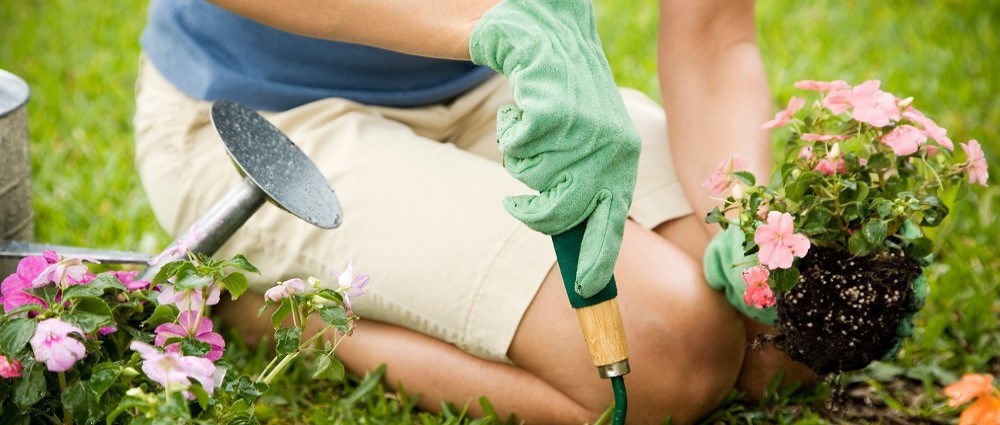10 tips to gardening on a budget
There are many reasons to get into gardening. You’ll spend more time outdoors, grow your own fruit and vegetables and it can help you stay active, too.
Also, unlike other hobbies, gardening needn’t be expensive. Here are 10 ways to garden on a budget.
1. Divide perennials
Many herbaceous perennials – plants that die back each year but whose roots remain alive and create new top growth again the following year – can be divided to make more plants, getting more bang for your buck [1].
When you buy them, simply split them before planting. This video from the RHS shows you how to go about it.
You can also split supermarket herbs, which can be quite pricey.
2. Double up on potatoes
You can make your potatoes go further. Cut tubers in half before planting seed potatoes, and you’ll double your spuds.
Be sure to check each half tuber has a couple of buds and allow them to dry before planting.
3. Reuse plastic plant labels
Save money and reduce your garden’s impact on the environment by taking simple steps like reusing your plastic plant labels, so you don’t have to buy new ones.
If you do run out of labels, you can just cut some strips from old plastic bottles to create new ones.
4. Start from seeds
Packets of seeds are much cheaper than seedlings or plants.
Before heading to your garden centre, see if you can get a cheaper deal online. Discount stores like Poundland and Aldi may also sell cheap packets of seeds.
5. Start your own compost heap
Create your own compost heap rather than buying expensive bags from garden centres.
As well as saving money, home composting is an environmentally-friendly way of dealing with kitchen and garden waste – be sure you know what you can and can’t put in.
6. Buy second-hand tools
You needn’t spend a fortune on gardening tools.
Just buy it all second hand. You may be able to find some good deals in sites like Gumtree, eBay or Facebook Marketplace for equipment like spades, forks, rakes and shears.
Better still, ask green-fingered friends and family if they have any spares. They may have accumulated half a dozen pairs of secateurs, not to mention piles of plant pots they can spare.
7. Forage for plant supports
If you’re growing climbing plants like beans, they’ll need support to stop them from toppling over. The standard way to do this is to tie them to bamboo canes. But this is another thing you can avoid splashing out on. Simply forage for some long, straight sticks to use instead of bamboo.
8. Use toilet rolls as plant pots
Toilet rolls make great biodegradable plant pots. The plant roots will grow through the cardboard as it breaks down in the wet soil.
Egg shells can be used as planters too - here’s how to do it.
9. Grow money-saving fruit and veg
When you’re planning what to grow each year, prioritise any fruit and veg that tends to be a little pricey to buy from the supermarket.
This might include the likes of leafy herbs, salad leaves and soft fruits like strawberries, which can be quite expensive.
10. Build a bottle greenhouse
Ready to take your money-saving gardening to the next level? Then how about a greenhouse made from plastic bottles?
You’ll be creating an eco-friendly source of warmth for your plants, all at a fraction of the price you’d spend on a regular greenhouse. You can find instructions online on how to go about it, such as this simple guide from the RHS.
With these money saving tips, gardening can quickly turn into a cheap and enjoyable new hobby.
[1] https://www.rhs.org.uk/advice/profile?pid=363

